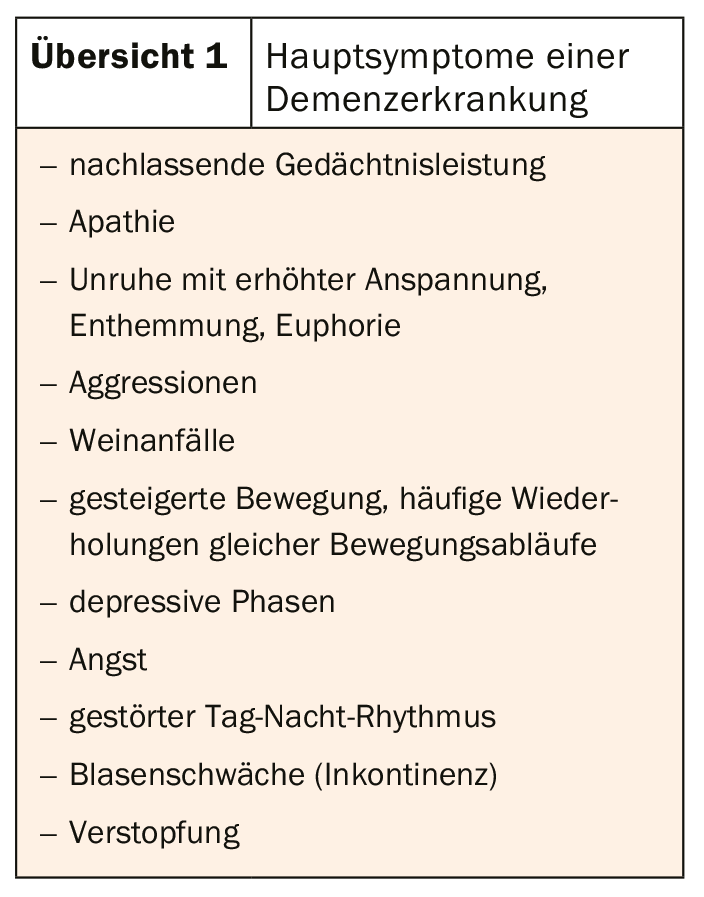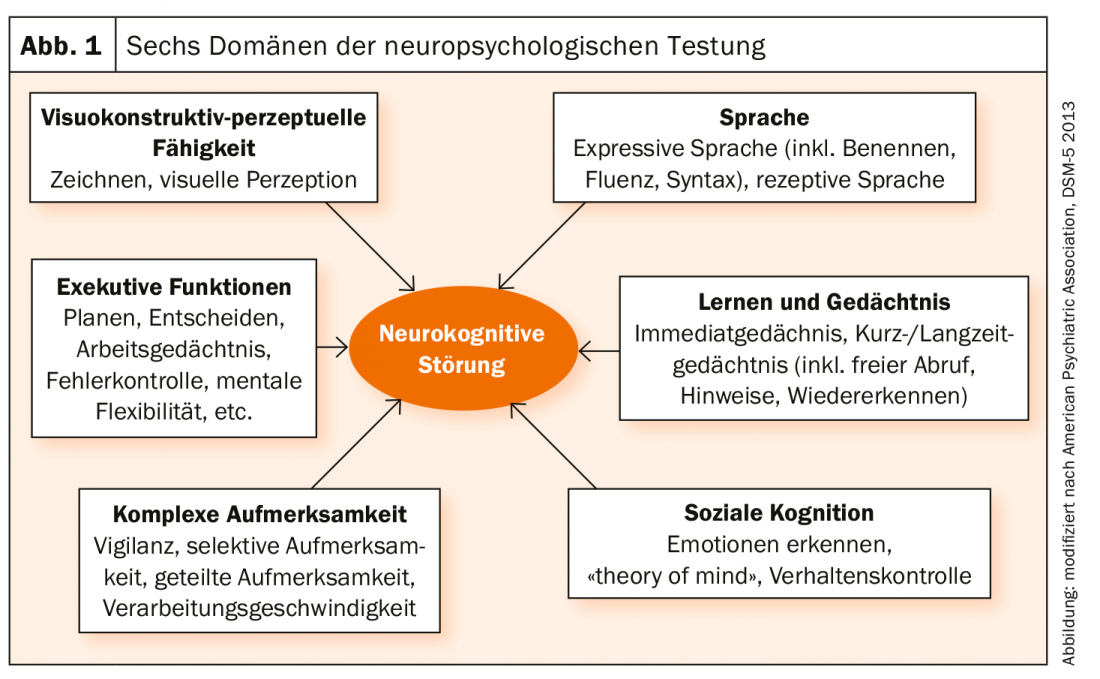Current demographic trends are leading to a growing number of elderly people and thus to an increase in patients suffering from age-related diseases such as dementia. Addressing this health challenge requires a precise diagnostic process as well as effective treatment strategies.
Current demographic trends are bringing with them a growing number of older people. Accordingly, age-related diseases are on the rise. Dementia is estimated to affect 131.5 million patients by 2050. Dementia is an umbrella term for brain disorders of various causes. Patients increasingly suffer from a loss of memory, orientation, communication and independent living skills (overview 1).

Phased progression
Scientists believe that the disease is asymptomatic for as long as 30 years before the first signs are seen. The first indications of changes can already be found after puberty, although the amyloid plaques do not become visible until much later. Different biomarkers in the cerebrospinal fluid can also be detected as early as 20 years before the onset of the disease. These include, for example, beta-amyloid peptides and tau protein. If these accumulate over time and a critical threshold is exceeded, the pre-dementia phase begins. In this first, occasional cognitive failures become noticeable. The ability to remember and concentration decrease.
Then, within the next four years, there is a significant decrease in brain mass in the hippocampus. Language and speech comprehension suffer and everyday life also becomes more difficult. While in the beginning it seems to be more the short-term memory that is affected, now the long-term memory is also fading more and more. Experiences of the past years are forgotten, whereas memories from childhood are suddenly experienced as having just happened. The patient’s personality also changes. Distrust, irritability, nervousness and aggressive outbursts are an expression of the progressive disorientation.
In the late stage, physical deterioration also begins. Patients often suffer from muscle spasms and stiff joints. In the end, they become bedridden nursing cases. Language dries up and new ways of communication have to be found.
Dementia equals Alzheimer’s?
In addition to the current 148,000 dementia patients in Switzerland, an estimated 28,000 new patients are diagnosed each year. Alzheimer’s disease is the most common form of dementia, accounting for over half of all diagnosed cases, followed by vascular dementia (20%). Particularly in older age, however, mixed forms are also frequently present.
Accordingly, precise diagnostics are important in order to be able to initiate the appropriate individually effective therapies. Neuropsychological testing is very comprehensive and covers a total of six domains (Fig. 1) . As a rule, paper-pencil tests are performed, which incl. Anamnesis take about 2.5 hours. Increasingly, however, tablet-based self-tests are being used. A medical examination, an MRI and, if necessary, a cerebrospinal fluid analysis complete the diagnostic process. Another step in the right direction can be meaningful biomarkers that can be detected in the blood. Intensive research is currently being conducted into this.

Multimodal therapy regime
Effective diagnosis is also important in view of the fact that dementia cannot be cured, but its course can be positively influenced in its early stages. Multimodal therapy consisting of pharmacological intervention, memory training, and behavioral and sociological therapy is indicated. For pharmacotherapy, antidementia drugs are primarily used. In mild to moderate dementia, acetylcholinesterase inhibitors in particular have been shown to be effective. Both donepezil and rivastigmine and galantamine resulted in improvements in cognition, daily living skills, and behavior. Cholinesterase inhibitors block the enzyme responsible for breaking down acetylcholine. The concentration of the messenger substance increases accordingly.
In severe AD, donepezil or the NMDA receptor modulator memantine are used. Glutamate antagonists block glutamate receptor sites at synapses, inhibiting excitation transmission at neurons regulated by glutamate.
Future treatment options
New therapeutic approaches are being investigated, particularly with regard to β-amyloid accumulation. The monoclonal antibody binds to soluble and insoluble beta-amyloid in the brain and leads to a significant reduction of the neurotoxic peptide. New analyses of a Phase III study are expected to prove that the hopes placed in the new substance are justified. After initially a lack of prospect for a significant effect led to the study’s discontinuation, new information has now been published. At high doses, the new Alzheimer’s drug may well be able to reduce cognitive decline in early-stage Alzheimer’s patients. Patients treated with high-dose aducanumab (10 mg/kg body weight) showed a significant reduction in clinical worsening from baseline CDR-SB scores at 78 weeks (23% vs. placebo, p=0.01).
Source: Basel Dementia Forum
Further reading:
- www.beobachter.ch/gesundheit/krankheit/demenz (last accessed on 14.01.2020)
- www.bag.admin.ch/bag/de/home/krankheiten/krankheiten-im-ueberblick/demenz.html (last accessed on 14.01.2020)
- https://alzheimer.ch/de/angehoerige/diagnose/magazin-detail/50/alzheimer-ist-die-haeufigste-form-von-demenz/ (last accessed on 14.01.2020)
- www.nature.com/articles/s41582-019-0295-9 (last accessed on 14.01.2020)
- www.dasgehirn.info/krankheiten/morbus-alzheimer/schleichend-zum-vergessen?gclid=EAIaIQobChMI0Ob-ruqH5wIVFODtCh2-Ew2uEAAYAiAAEgIMCPD_BwE (last accessed 16.01.2020)
InFo NEUROLOGY & PSYCHIATRY 2020, 18(1): 36-37 (published 1/23/20, ahead of print).











